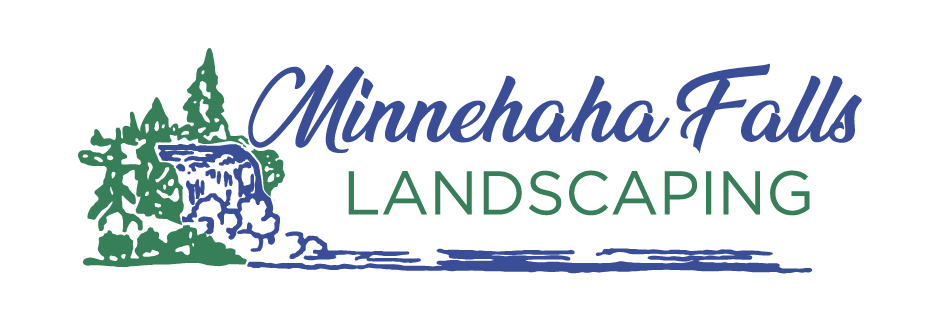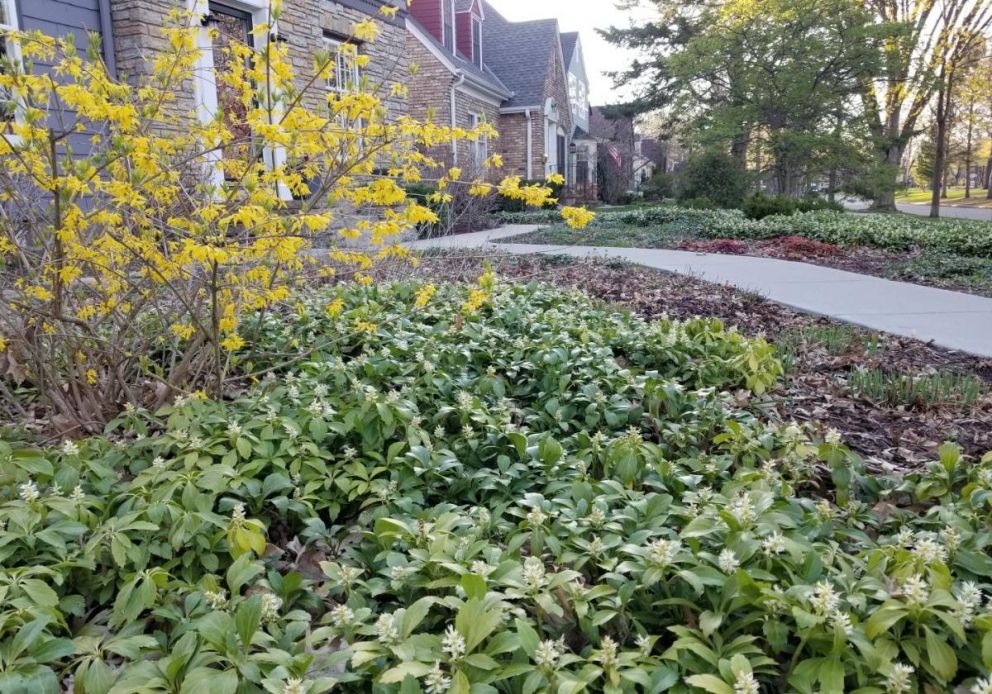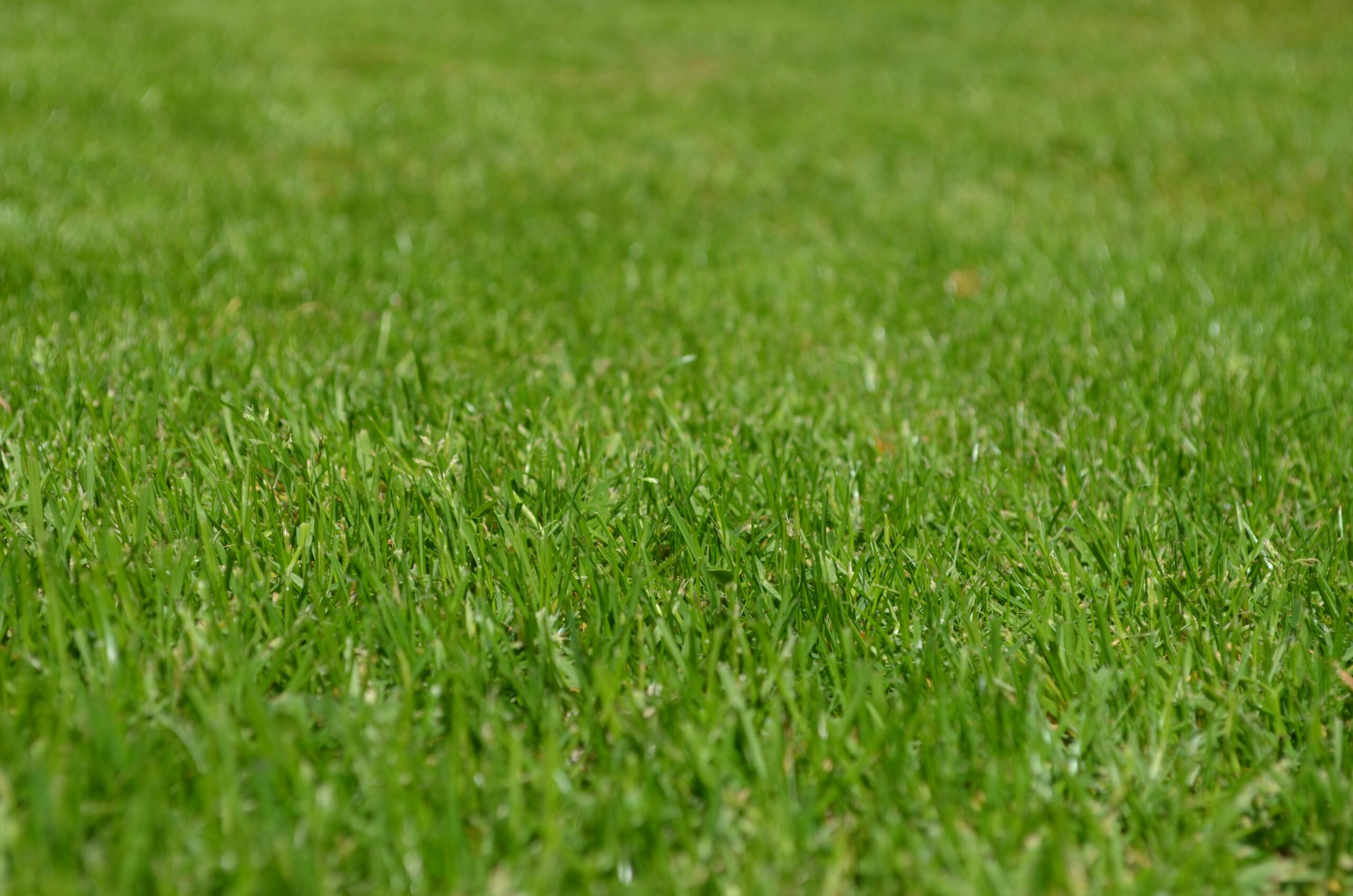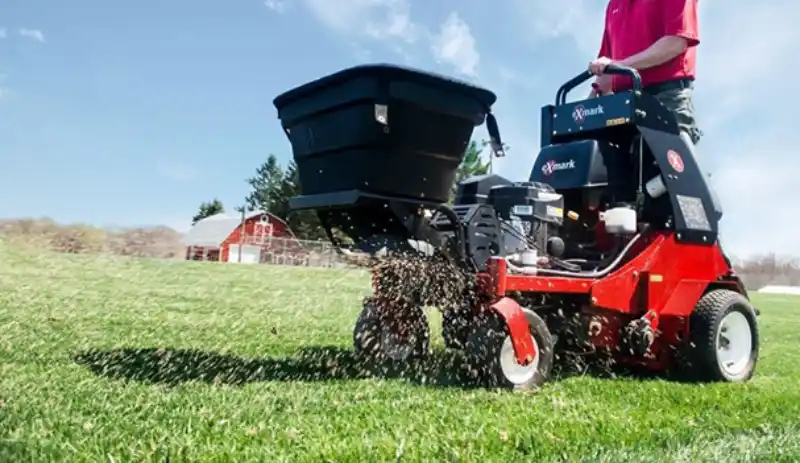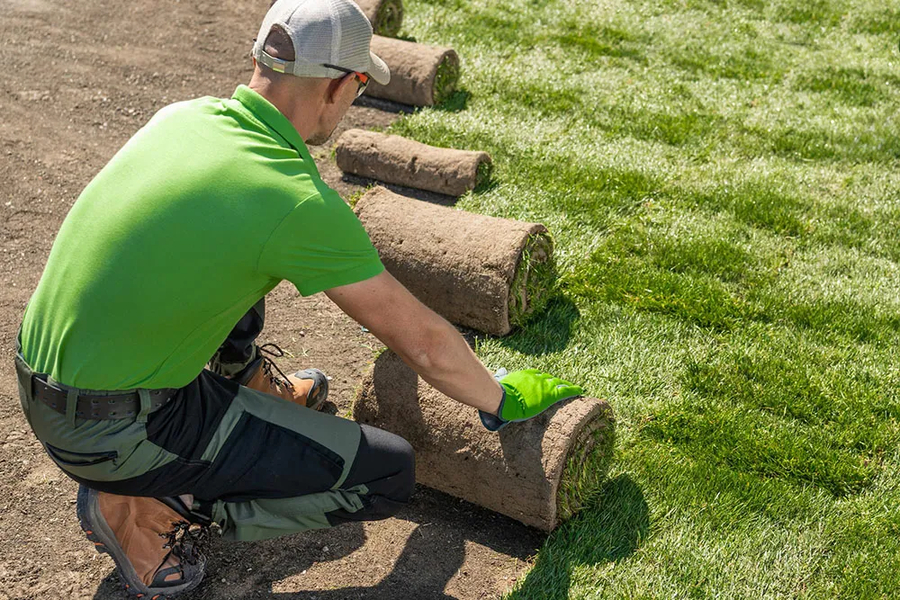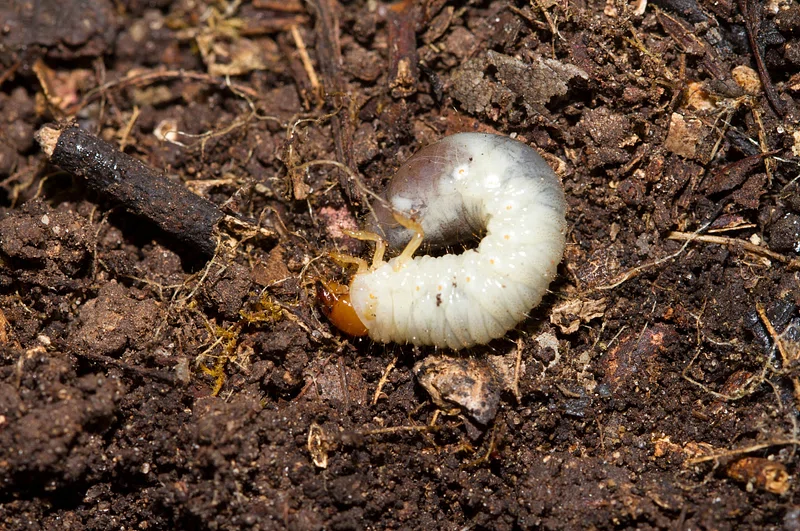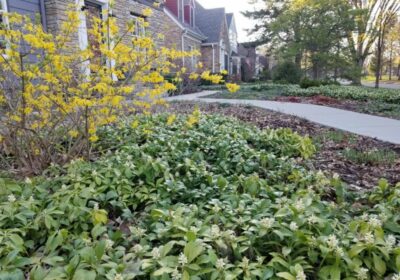 If you’re like me, you want an attractive landscape that mostly takes care of itself. Low maintenance is one of the most often repeated themes we hear during our landscape consultations and garden coaching sessions. People are tired of having to mow their lawns every week, or climb the hill with a mower and risk it all just to cut the grass.
If you’re like me, you want an attractive landscape that mostly takes care of itself. Low maintenance is one of the most often repeated themes we hear during our landscape consultations and garden coaching sessions. People are tired of having to mow their lawns every week, or climb the hill with a mower and risk it all just to cut the grass.
Lawns are among the highest maintenance forms of landscape we can choose to grow at home. We love helping people switch over from high-maintenance lawns to low maintenance landscapes. Whether you’d prefer a Bee-Lawn which requires less mowing than a regular lawn, or if you’re sick of mowing all together, we’re here to help.
Spreading plants are our allies
Our favorite low maintenance landscapes are comprised of spreading native plants. Many folks have expressed concern to me over the years about spreading plants because they are worried that these plants will “take over”, and that is exactly why we should all embrace spreading plants. They take over and help keep weeds out while covering the ground and providing beauty. Far from being “invasive” spreading plants are doing us many favors in the landscape.
Spreading plants can achieve both the “wilderness” aesthetic and they can be used to create a more formal look. Spreading native species can be blended together to form a dense “state park” like look or they can be used to create formal designs by blending spreading plants together in clever combinations that keep the ground covered in green and prevent weeds from taking root.
Multiple Layers
Multiple layers of canopy cover is one of the best tools we have to keep weeds out and lower maintenance in our garden beds. In order to achieve a multi-layered canopy, you can pick at least 3 types of plants from at least 2 of the 3 categories below and blend them together.
When we intentionally install multi-layered plant canopies, we’re preventing sunlight from hitting the ground, and in doing so we’re discouraging weed seeds from sprouting.
Formal Gardens
If you prefer a formal garden look for your low-maintenance landscape, you’ll want to explore blending spreading shrubs and ground covers.
We’ve used these combinations in the city and suburbs to create low maintenance landscapes that looks attractive in a neighborhood setting.
A more formal garden incorporates spreading shrubs and ground covers in order to cover the ground in green and prevent weeds while maintaining a high-curb-appeal. Shrubs will spread out over time and ground covers act like a “living mulch” filling in around the shrubs to keep moisture in the soil and prevent weeds.
Spreading Shrubs
Gro-Low Sumac: 2-3’ tall. This is an outstanding groundcover shrub that is short but spreads about 8 feet wide. It grows in most any soil in full or part sun. Excellent purple-red foliage in the fall. Drought resistant and perfect for holding a hillside or mass plantings.
Low Bush Honeysuckle: 3’ tall. Lovely low mounding, deciduous shrub with colorful bronze-green foliage. Yellow flowers in spring turn red-orange during summer. Attracts songbirds who eat seeds and fruit.
Grey Dogwood ‘Muskingum’: 3’ tall. Foliage emerges deep red. Creamy white clusters of flowers in May-June, followed by white berries loved by birds. Strong spreader that makes a phenomenal groundcover. Tolerates pollution, drought.
Taunton Yew: 3’ tall. Taunton is a dense, low-growing yew which branches freely. Grows in sun or shade. Birds love to hide in yew branches. Requires well-drained soils. New growth emerges yellow and ages to dark green.
Spirea: 3-6’ tall. Several species of spirea are suitable for mass plantings. Blooms from pink to white attract bees and butterflies. Can be pruned to encourage re-blooming.
Spreading Ground Covers
Vinca Minor: 3-6” tall. Strong spreader, the definition of low-maintenance. Vinca minor has lovely, evergreen, broadleaf foliage and violet colored flowers; it is an excellent ground cover and is perfect in and around shrubs and trees.
Pachysandra: 6” tall. Pachysandra is an excellent ground cover in sun or shade. Works well under trees and shrubs. Sweet white blooms in early spring.
Wintercreeper: 6” tall. is a fast-growing, very strong, ground cover vine. Excellent plant for holding slopes, grows in sun or shade. Blends well with spreading shrubs.
Sedum: 1-6” tall. Groundcover sedum comes in several varieties some with gently rounded, chubby leaves tinged pink some with spiky yellow-green foliage, some with slightly blue-ish foliage. Succulent leaves allow sedum to store water and thrive in hot, dry spaces. Blooms come in many colors from white to pink, red, and yellow.
Wooly Thyme: 2-4” tall. Woolly Thyme is an excellent low maintenance groundcover. Fuzzy gray foliage and vigorous, horizontally spreading stems. Grown for the foliage as it rarely flowers. Perfect for a crack filler between patio stone and pavers. Highly drought resistant.
Prairie meadows
One of our favorite combinations of spreading plants incorporates spreading native plants in a way that mimics prairie planting. Here are some of our favorite low maintenance prairie plants. These are all strong spreaders and should be used in spaces where you’re ok with them taking over.
Tall Native Plants
Sunchokes: 5-9’ tall (Helianthus tuberosus), also called sunchoke, Earth apple, or sunroot, is a native north American sunflower species. It grows wild in eastern and western North America. Edible and easy to grow, I purchased sunchokes at the grocery store 10 years ago and planted some in the yard. They are the last plant to bloom in my garden every growing season.
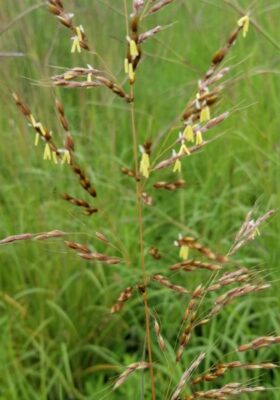
Big Bluestem: This 6-8’ elegant plant is a sight to behold as it waves in the wind. The dominant plant species in Minnesota prairies, it is also the most widely distributed of tall prairie grasses,. Winter interest is provided by leaves and stems that change color after a hard frost. Their graceful stems are beautiful through the winter. Andropogon gerardii is extraordinarily hardy and will grow in nearly any soil, from dry sand to wet clay.
Common Milkweed: 2-4’ tall, Asclepias syriaca. Every garden needs milkweed. The home for monarch caterpillars, milkweed is an astoundingly lovely plant. It grows in sandy soils and other well drained soils in sunny areas and partially sunny areas.
Obedient Plant: 2-4’ tall, Physostegia virginiana, the obedient plant, is a strong spreading member of the mint family, and like every mint it is a magnate for pollinators. Also called False Dragonhead, Lamiaceae. It is native to North America. Physostegia are known commonly as obedient plants although that belies their spreading habit.
Golden Rod: 2-4’ tall, Solidago, This bright, attractive native bloomer is a big favorite of bees. Yellow flowers in late summer don’t make people sneeze, but are often confused for an allergen because they bloom at the same time as ragweed.
Fireweed: 4-8’ tall, Chamaenerion angustifolium, a colorful native bloomer loves the edge of the woods and open meadows. Widely distributed across North America, excellent spreading plant with brilliant pink blooms.
Prairie Onion: 2-4’ tall, Allium stellatum, the prairie onion makes the list. Edible, native, pollinator friendly, and attractive. Spring blooms.
Ironweed: 4-6’ tall. Named for its tough stem, Ironweed has excellent upright posture in the garden. The flowers of Ironweed are a rare color in the late summer landscape, and the brilliant purple-crimson bloom is very attractive to butterflies. An excellent addition to the pollinator garden, Ironweed is a host plant for the American Painted Lady butterfly.
Medium Native Plants
Aromatic Aster: 2-3’ tall Symphyotrichum oblongifolium, Bee favorite, a wonderful late season bloomer full of bright purple color, Minnesota native.
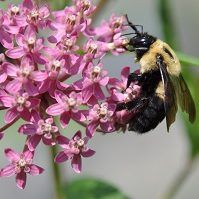
Swamp Milkweed: 2-3’ tall Asclepias incarnata, the swamp milkweed, rose milkweed, rose milkflower, swamp silkweed, or white Indian hemp, is an herbaceous perennial plant species native to North America. It grows in damp to wet soils and also is cultivated as a garden plant for its flowers, which attract butterflies and other pollinators with nectar. I see more monarch caterpillars on swamp milkweed than on any other type of milkweed.
Great Blue Lobelia: 2-3’ tall Lobelia siphilitica, lovely blue blooms, short lived native perennial that often seeds itself to extend its presence in the garden. Growing up to three feet tall, it lives in zones 4 to 9 in moist to wet soils. It blooms from August to October. Bees and hummingbirds love lobelia.
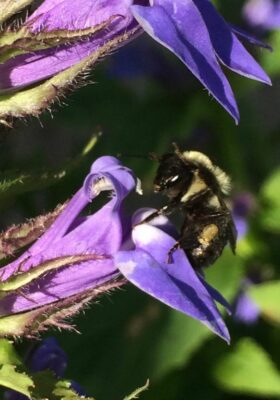
Prairie Phlox: 1-2’ tall. Phlox pilosa, native early summer blooms, pollinators love phlox. Keep in full sun. Spreads from seed.
Prairie Sage: 2-3’ tall. Monarch butterflies love prairie sage. Artemisia ludoviciana is a North American species in the daisy family that is grown primarily for its attractive, medicinal silver foliage. Strong spreader.
Short Native Plants
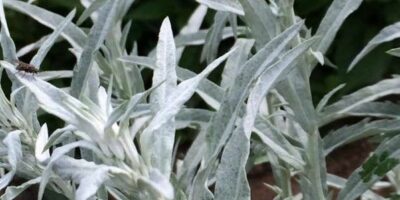
Canada May Flower: 1-2’ tall. Striking foliage and soft white flowers of Canada Anemone provide an excellent groundcover for damp or partially shady areas. Spreads rapidly by underground rhizomes, forms excellent groundcover.
Wild Leek: 8-12” tall. Ramps, ramsons or wild leeks, are one of the earliest wild edibles to emerge in the spring. High in vitamin C, ramps have saved many a mountaineer from scurvy and other nutritional maladies. Modern foragers dream all year about that uniquely pungent garlicky-onion flavor. Pair with morels and fiddle head ferns for a delicious spring meal.
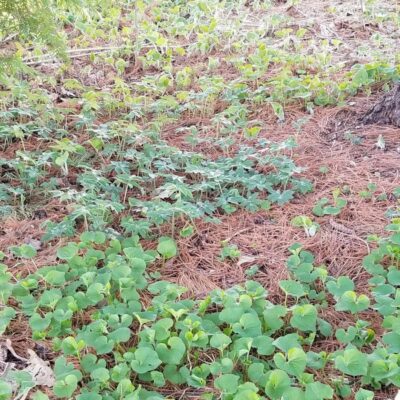
Wild Strawberry: 3-6” tall. Best tasting strawberry by far. Any type of strawberry will work as ground cover. Nice fall color and a low, tight to the ground growing habit. Full sun to partial shade, grows best in well drained soils.
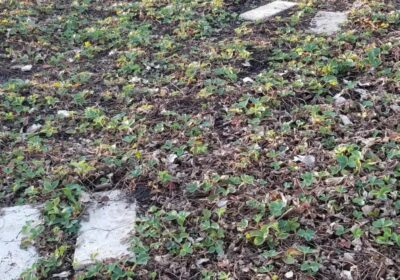
Virginia Waterleaf: 6-12” tall. Strong perennial ground cover that volunteers in many gardens. This woodland perennial with the water-stained appearance of the leaves and tubular white flowers.
Woodland Phlox: 6-12” tall. Phlox divaricata is a lovely spring ephemeral wildflower that forms foot tall clumps. Plants have semi-evergreen oval or lance shaped deep green leaves. In early spring, foliage is crowned by loose clusters of showy pinkish-lavender or icy blue flowers. Woodland phlox is a fine groundcover for woodlands or shade gardens with moist well drained soil.
Be Creative
Blend varying heights of spreading plants together to create an impenetrable canopy that will prevent weeds and support one another through the growing season. In addition to the plants above you may want to use some spreading herbs and annuals to add another dimension of delight to your gardens. No matter what type of plants you purchase, make sure they weren’t grown with any pesticides so they don’t harm wildlife in your gardens.
Spreading Herbs
Thyme: 1-3” tall. Thyme (Thymus vulgaris) is a low-growing, woody perennial. It is a highly aromatic Mediterranean herb that grows well in dry, sunny conditions. The tiny pink, lavender, or white tubular flowers of thyme plants show up in the spring and summer and are well-liked by bees. Great for filling in spaces between patio stones and covering sunny retaining walls.
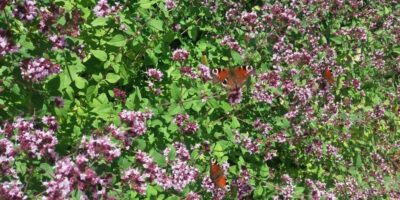
Oregano: 3-6” tall. Perfect ground cover in sun or part shade. Oregano is a bushy, woody-branched perennial member of the mint family, Lamiaceae. Used extensively in a variety of cuisines, it is known for its earthy, robust, aromatic flavor.
Dill: 2-3’ tall. Use seeds to flavor pickles and the leaves to brighten salads, soups, omelets and vegetables. Likes full sun. Plant seeds or plants outside after all danger of frost. Readily spreads by seed.
Spreading Annuals
Sweet Potato Vine: 1-2’ tall. Spreads up to 6’ wide. Excellent bright green foliage of ‘Marguerite’ makes it one of our favorites. Grows edible potatoes, sometimes as big as a football.
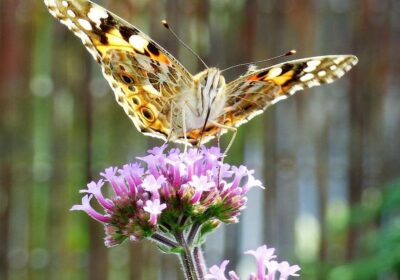
Wave Petunias: 1-2’ tall. Large spreading annual with vibrant color. Stunning display in the garden or container. Make sure your annuals are purchased from nurseries that don’t use any pesticides.
Setcrease: 6-12” tall. ‘Purple Heart’ is a trailing, annual with purple stems and violet-purple leaves that produces pink flowers in summer. This plant is mainly grown for its stunning foliage. Will spread well in a single season. Able to be over-wintered in the house for spring re-planting.
